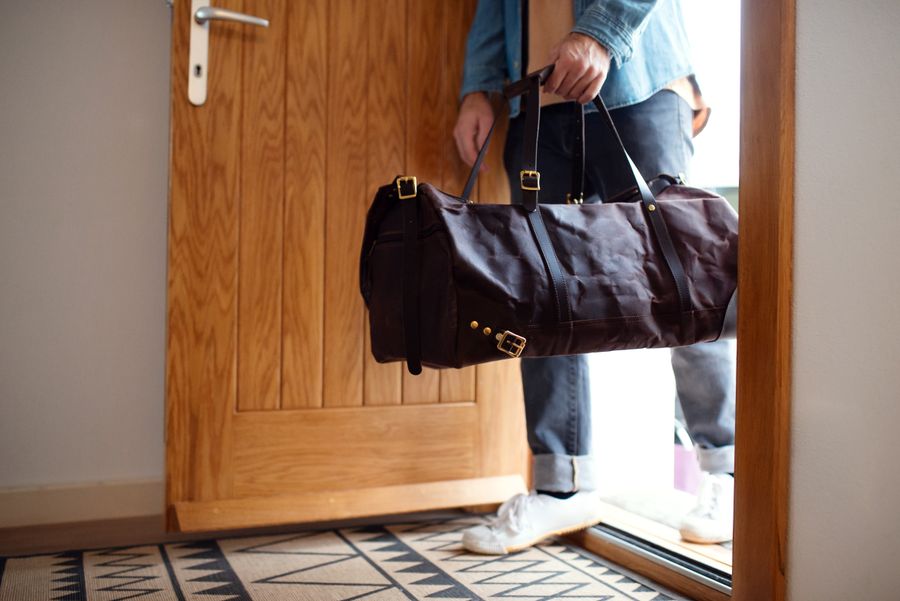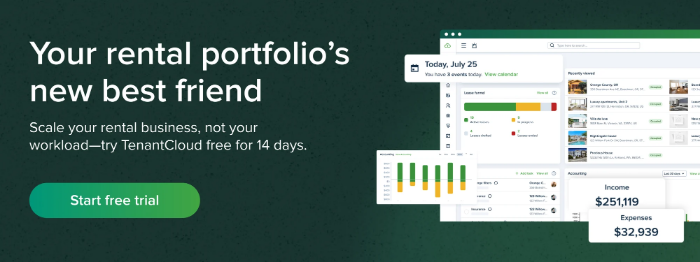As a landlord or property manager, you may have experienced the unexpected: a tenant in one of your properties has changed the locks without telling you. You’re suddenly locked out of your own property – unable to respond to emergencies, conduct necessary maintenance, or ensure that your investment is protected.
But before you panic, it’s important to think from the tenant’s perspective. Perhaps this isn’t a nefarious move but instead comes from a place of genuine concern: a lost key that could be found by anyone, personal safety issues, or other security concerns that required them to act quickly.
The tension between a landlord’s right to access their property and a tenant’s right to feel secure in their home is often at the heart of the rental lock-changing debate. While property owners need to maintain access for emergencies and legal obligations, tenants have legitimate reasons for wanting control over who can enter their homes.
So, what’s a tenant or a landlord to do when the locks are changed? Is it legal? How can you make sure that you have the right system in place to keep everyone on the same page? Let’s answer these questions and determine when tenants can (and can’t) change the locks.
Can a Tenant Change The Locks Without the Landlord’s Permission?
The short answer is no – in most cases, tenants shouldn’t change the locks without first communicating with their landlord and getting permission. This requirement typically stems from both legal obligations and lease agreements that protect both parties’ interests.
Most standard rental lease agreements include specific clauses about property alterations – which include lock changes. These clauses exist for a good reason: landlords are legally obligated to maintain a safe and habitable property. This means they need reliable access for the following:
- Emergency situations like water leaks or gas problems
- Required maintenance and safety inspections
- Scheduled repairs
- Property assessments
- Other legal requirements
But it’s important to note that the specifics can vary by location and circumstance. Some states – like California – allow tenants to change the locks as long as they promptly provide the landlord with a new key and notice. States like Texas require landlord permission be granted before the tenant makes any substantial changes to the property.
This is why it’s important to always know what your state’s tenant and landlord laws are - and what your specific lease states. Breaking these rules an have serious consequences for tenants, such as:
- Lease violations that could lead to eviction
- Financial responsibility for any damage or necessary lock replacements
- Liability if emergency access is prevented
- Potential deductions from security deposits
- Legal issues if proper access is denied
For landlords, unauthorized lock changes create some significant liability risks. Without proper access, property owners can’t fulfill their legal obligations for maintenance and safety – which can lead to property damage or tenant safety issues. When emergencies arrive, landlords need to have immediate access to protect everyone involved in the property.
Why Would A Tenant Change The Locks?
So – what would cause a tenant to try and change the locks without permission? Not all reasons are malicious, and most come from a moment of panic or not realizing what the lease requires:
The Tenant Has Lost Their Keys
When tenants lose their keys, they’re put in an immediate security issue – namely, that anyone who finds the keys could gain access to the property.
While their first idea might be to change locks immediately, tenants should notify their landlord or property manager first before moving ahead. This will help them determine the best course of action that protects everyone.
They Have Previous Tenant Concerns
Moving into a new rental property often raises questions – such as who might still have keys from previous tenancies.
Landlords should always change or rekey locks between tenants, but some new tenants may still feel uneasy about the possibility of unauthorized copies existing. This can be especially true in a location that has a high turnover rate.
There Have Been Security Incidents
After a break-in attempt or actual burglary, it’s natural that tenants might feel vulnerable and want immediate action to secure their homes.
Yet, even when a tenant feels unsafe, it’s always wise to work directly with the landlord or property manager to solve the issue – rather than attempting unilateral lock changes.
Tenants Have Domestic Safety Issues
There come times when tenants are involved in sensitive situations involving domestic disputes. When this happens, tenants might feel the need to immediately change the locks to protect themselves and their families. These unique situations require quick action and special consideration from landlords, as tenant safety should be a top priority.
Tenants Want To Upgrade To Smart Lock
Here’s a simple reason – some tenants are tech-savvy and may want to upgrade their homes with smart tech. The latest smart lock options allow for keyless locking and entry, as well as offering temporary access codes for guests.
While this can seem like a harmless (and sometimes desired) upgrade, tenants must always adhere to the lease agreement. Making changes to the home outside the lease and without approval can quickly lead to problems.
The Tenant Has Landlord Access Concerns
In rare cases, tenants might feel their landlord enters their unit too frequently or without proper notice. When it comes to these concerns, simply changing the locks isn’t the best course of action. Rather, communication should always lead the way – particularly when it comes to access protocols and tenant rights to quiet enjoyment of their home.
Does a Landlord Have to Change Locks Between Tenants?
When would a landlord change the locks? While no federal law requires landlords to change locks between tenants, this is a common and often necessary practice protecting the new residents and the property owner's interests.
Legal Requirements and Best Practices
When you look at the laws, most states don't mandate lock changes between tenants. However, what is required is that landlords maintain their legal obligations to provide safe and secure housing.
This general duty of care – combined with liability concerns – often makes changing or rekeying locks between tenants a common industry practice. This includes rental property inspections – which should check all locks for proper documentation.
Insurance and Liability Considerations
Many landlord insurance policies have specific requirements for property security. Failing to change locks between tenants could potentially void coverage if an incident occurs involving unauthorized access by former tenants. Landlords may face liability if a new tenant experiences a break-in by someone with an old key.
Cost Responsibilities
The expense of changing locks typically falls to the landlord as part of normal property turnover costs. This includes:
- Professional locksmith services
- New lock hardware
- Key duplication
- Installation labor
Some landlords include these costs in their overall property turnover budget, while others may build it into the security deposit deductions from departing tenants if keys aren't returned.
Documentation and Key Control
Proper key management is crucial during tenant turnover. Landlords should always keep detailed records of the number of keys made for a property, as well as who has the keys.
Dates of rekeying or lock changes should also be maintained, and landlords should always have tenants sign for any new keys they receive – as well as any keys offered to contractors or maintenance teams.
Special Circumstances
As always, there are some specific instances when changing the locks suddenly is required. When any of the following happens, it’s wise to work directly with the tenant to ensure that a proper lock-changing procedure is complete:
- After an eviction
- Following a break-in
- When keys are reported lost or stolen
- If a domestic violence situation is involved
- When unauthorized copies are suspected
For example, a key landlord responsibility after a burglary is to make sure all locks are changed and all keys are documented.
Smart Solutions for Lock Management
Today, property security goes far beyond traditional keys and deadbolts. Modern technology offers innovative solutions that can help both landlords and a new tenant manage access more effectively while maintaining security.
Smart Lock Systems
Smart locks have come a long way in upgrading the control and convenience of home security. Many systems can eliminate most of the lock-change scenarios landlords may run into – as well as provide better access management. The benefits are many, including:
- Remote access control
- Temporary codes for maintenance staff
- Access logs showing entry times
- Easy deactivation of old codes
- Integration with property management software
- Backup key options for power outages
Electronic Access Control
For multi-unit properties, electronic access control systems can provide comprehensive security management that goes beyond individual unit doors.
These often include fob or card-based entry methods, as well as building-wide access management and control. Plus, with emergency override capabilities, landlords and property managers can always stay ahead of any emergencies.
Keyless Entry Options
Keyless entry systems eliminate many traditional key-related security concerns while offering enhanced convenience for both tenants and property managers.
Many of the top keyless entry options on the market today include features such as:
- Keypads with individual codes
- Biometric access systems
- Bluetooth-enabled locks
- Mobile app-controlled entry
- Two-factor authentication options
Best Practices for Tenant Lock Management
If you are going to successfully manage rental properties, you’ll need a balanced approach that protects both your tenant’s safety as well as your portfolio’s interest. That means having clear policies and utilizing modern property management tools that help prevent conflicts – even when it comes to changing the locks.
Clear Communication Protocols
The foundation of effective lock management starts with clear communication between all parties. Using a property management platform enables easy documentation and tracking of all security-related requests and changes.
- Submit and track lock change requests through the maintenance portal
- Document security concerns with photos and descriptions
- Maintain a clear record of all communications
- Access lease terms and security policies instantly
Documentation Requirements
Modern property management demands thorough record-keeping. Digital property management solutions help maintain the following:
- Detailed maintenance records of all lock changes
- Photo documentation of old and new locks
- Signed agreements about key possession
- Records of access codes and smart lock programming
- Digital copies of locksmith invoices and receipts
Emergency Response Plan
Every property should have a clear protocol for handling lock-related emergencies:
- 24/7 emergency contact information
- Pre-approved locksmith services
- Clear guidelines for emergency maintenance requests
- Documented procedures for after-hours lock issues
- Multiple ways to verify tenant identity during emergencies
When It Comes To Changing Locks, Communication Is Key
Managing rental property locks requires balancing security needs with practical access requirements. Tenant protection means having a right to feel safe in their homes – and landlords should always strive to keep appropriate access so that they can protect their investments and fulfill their legal obligations.
The key to successful lock management requires clear communication between everyone involved, as well as well-documented policies and procedures for every step of the way. When landlords communicate quickly and respond to tenant needs, the tenants will trust them to handle the details.
Want help in managing lock changes, tenant management, or any other property management needs? TenantCloud can help!
With a variety of features – including a maintenance request system, document storage, and communication tools – property owners can easily track and manage security-related issues while providing tenants with a secure, responsive living environment.
Want to simplify your property security management? Check out TenantCloud today – and find more great resources to help you keep a healthy tenant-landlord relationship!







